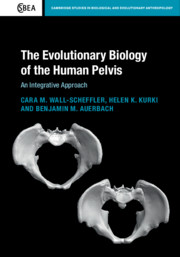‘The human pelvis is a lens through which so many questions about our evolutionary history can be asked and answered - from the way we enter this world, to the way we walk through it. Three of the world’s leading experts on the evolution of the pelvis have joined forces to write the definitive book on the anatomy, variation, development and evolution of a bone that has been central to the human story. Through concise writing, current research and clear illustrations, the authors write a coherent tale about a complicated bone, challenging many long-held beliefs along the way. I devoured this book and, like any great book, it left me with more questions than answers. It is sure to be the starting point for any scholar interested in the evolution of our pelvis and the launching point for all future research on this fascinating and still poorly understood bone.’
Jeremy DeSilva - Dartmouth College, New Hampshire
'Understanding of human pelvic evolution has increased dramatically as the fossil record has grown substantially. In this scholarly tour de force, Wall-Scheffler, Kurki and Auerbach pull together knowledge of the pelvis in an excellent synthesis examining data and conclusions from biomechanics, kinematics, fossil evidence, developmental biology, evolutionary theory and beyond. They identify multiple sources of selection on the pelvis, including locomotion, obstetrics, thermoregulation and body size, explicating how developmental, genetic, epi-genetic and evolutionary forces interact to determine pelvic morphology(ies) in living people. They recognise that essentialising childbirth has limited understanding of how anatomy influences obstetrical experiences. Thus, they are appreciative of past and present human variation in pelvic morphology, birth mechanism, body shape and locomotor pattern, realising that ignoring variation masks important patterns critical for understanding. This synthetic book is essential reading for anyone studying human skeletal anatomy, and sets an agenda for future studies of human pelvic evolution.’
Karen Rosenberg - University of Delaware
‘This volume presents a comprehensive review of the anatomy, functional morphology, evolution, growth and development, and variation of the human pelvis. The individual chapters and extensive up-to-date bibliography provide an excellent resource and reference for students interested in forensic anthropology, human evolution, and comparative anatomy. The contents may be familiar to seasoned experts in human skeleton biology, but it is always welcome to have a synthesis of the latest research on this topic in a single volume.’
T. Harrison
Source: Choice



